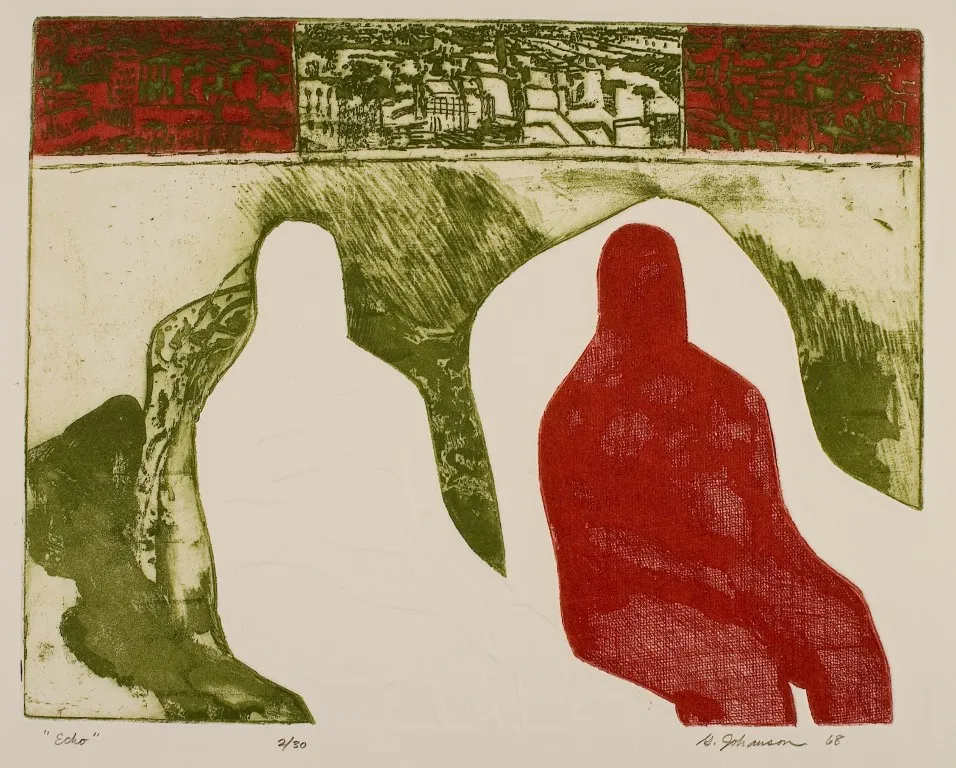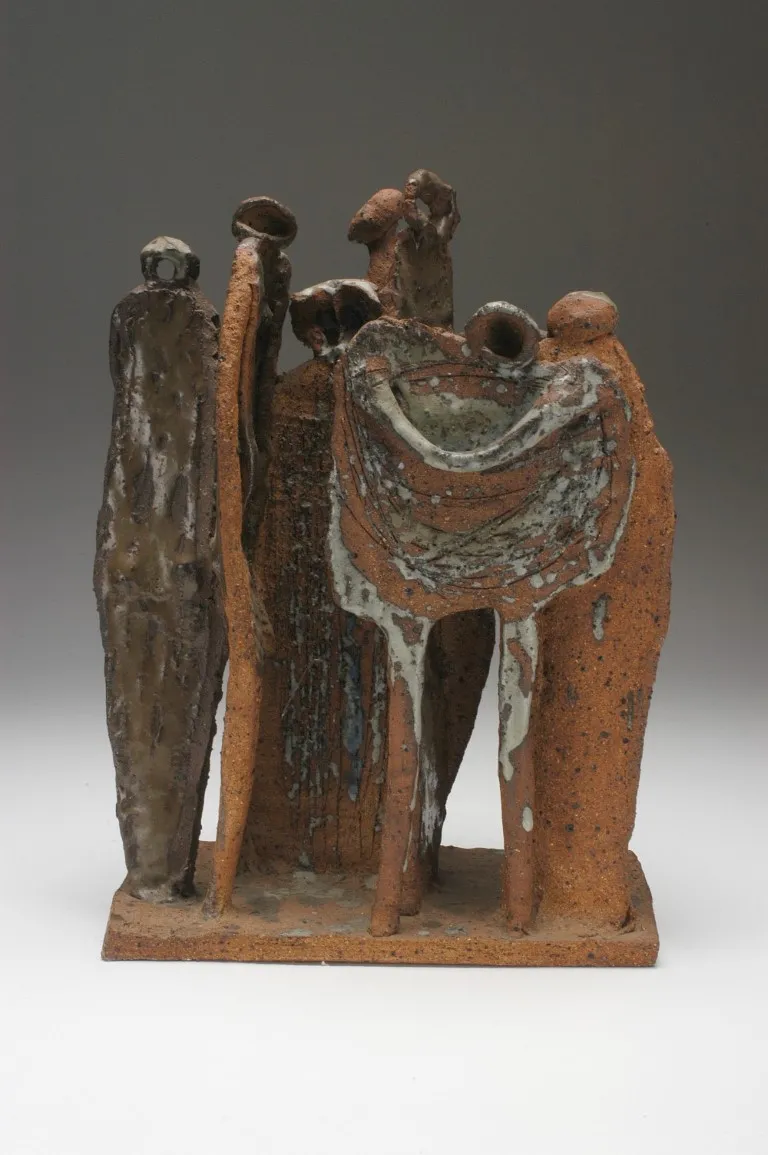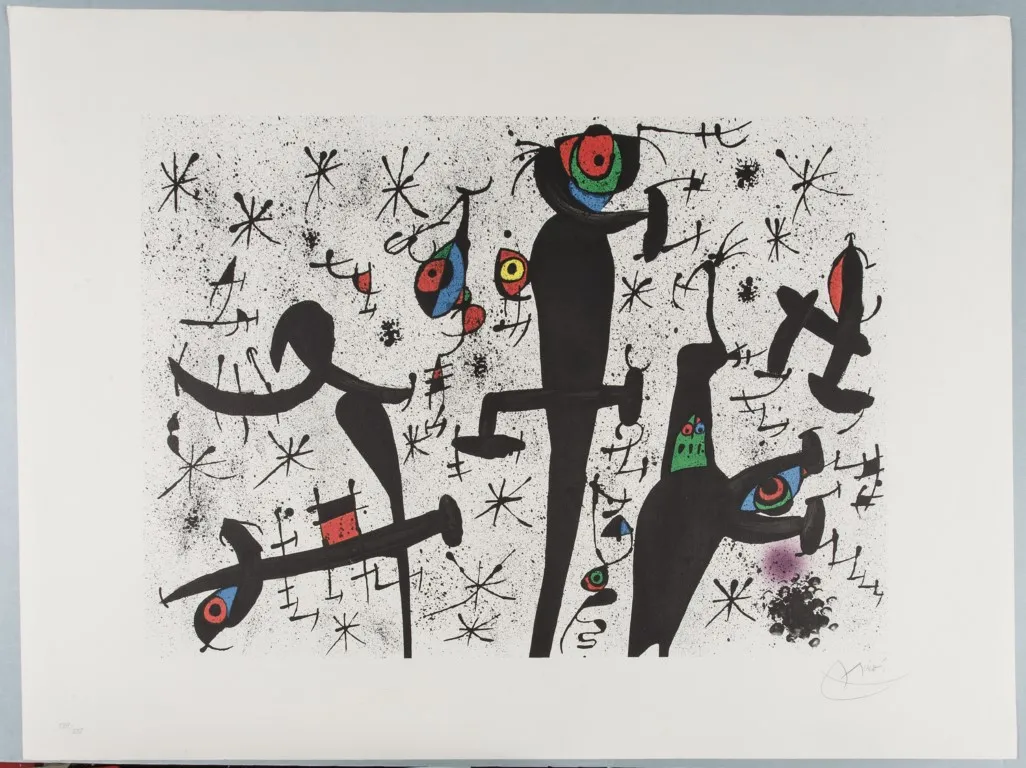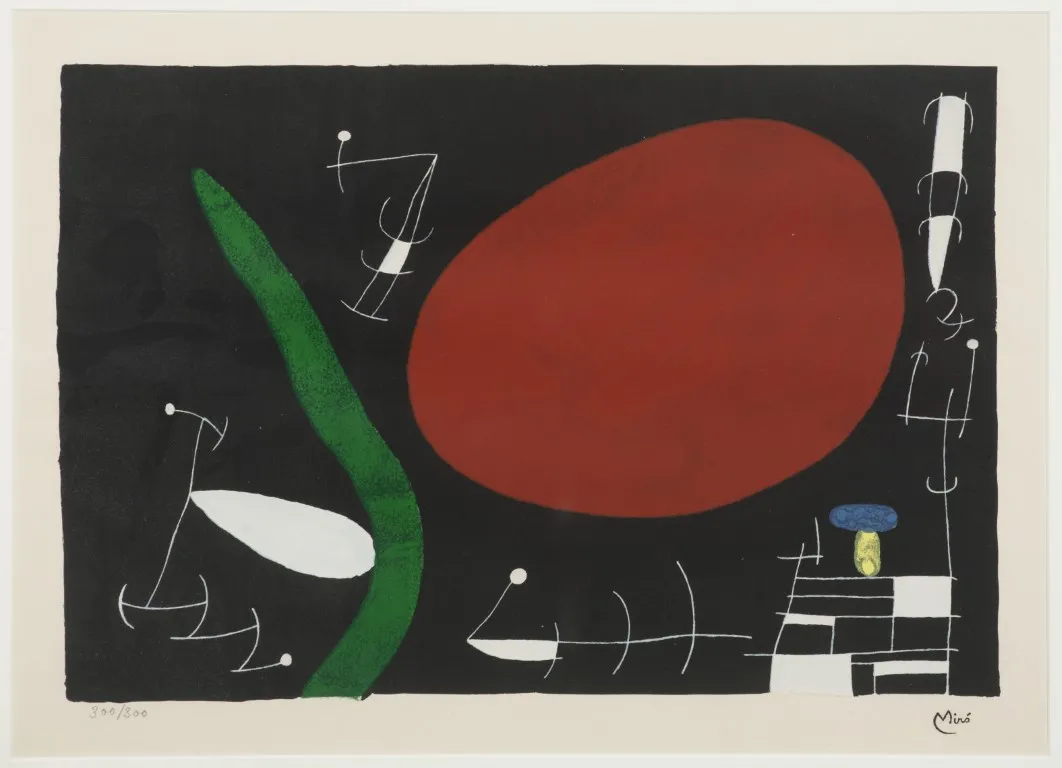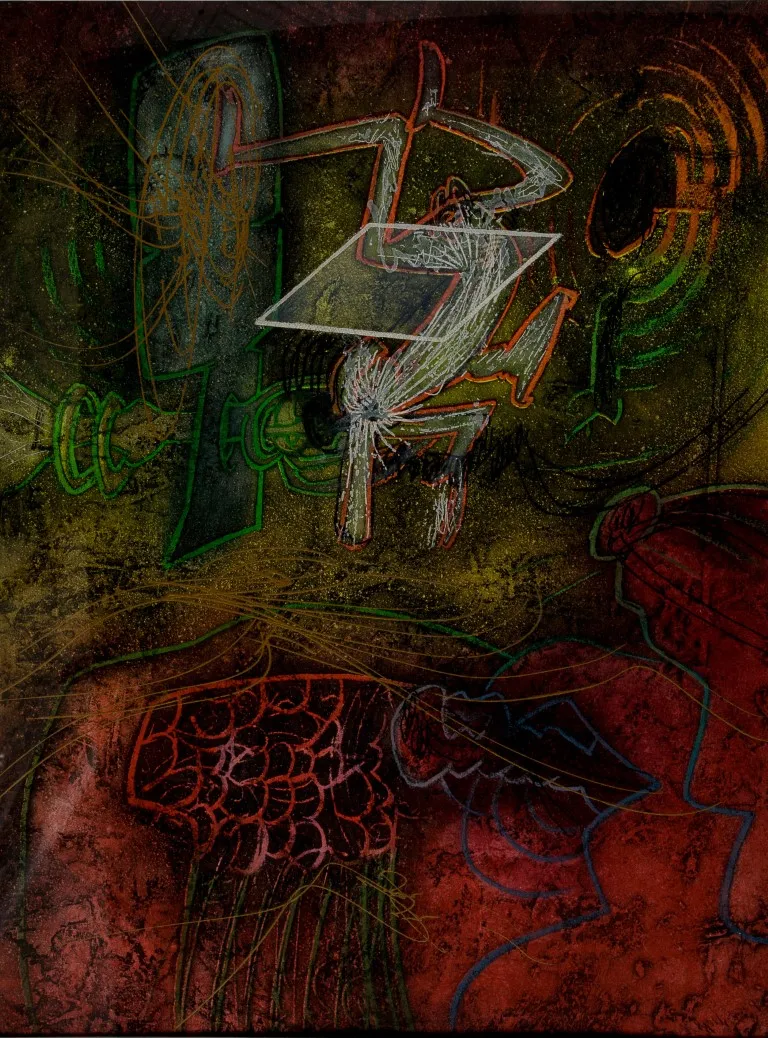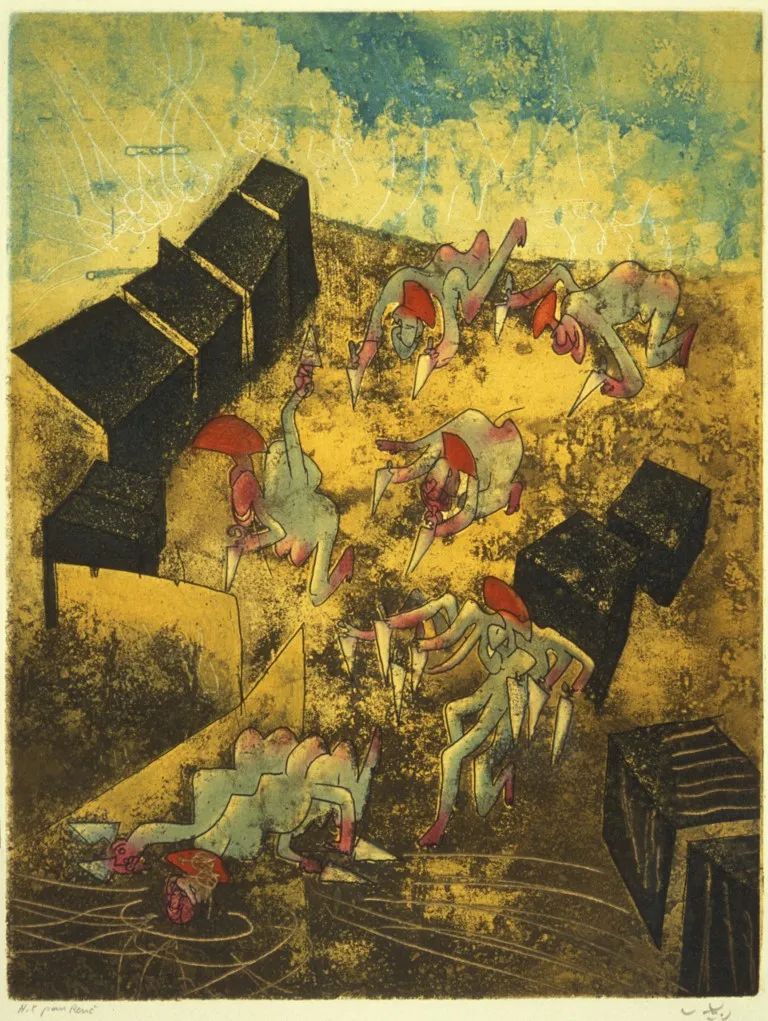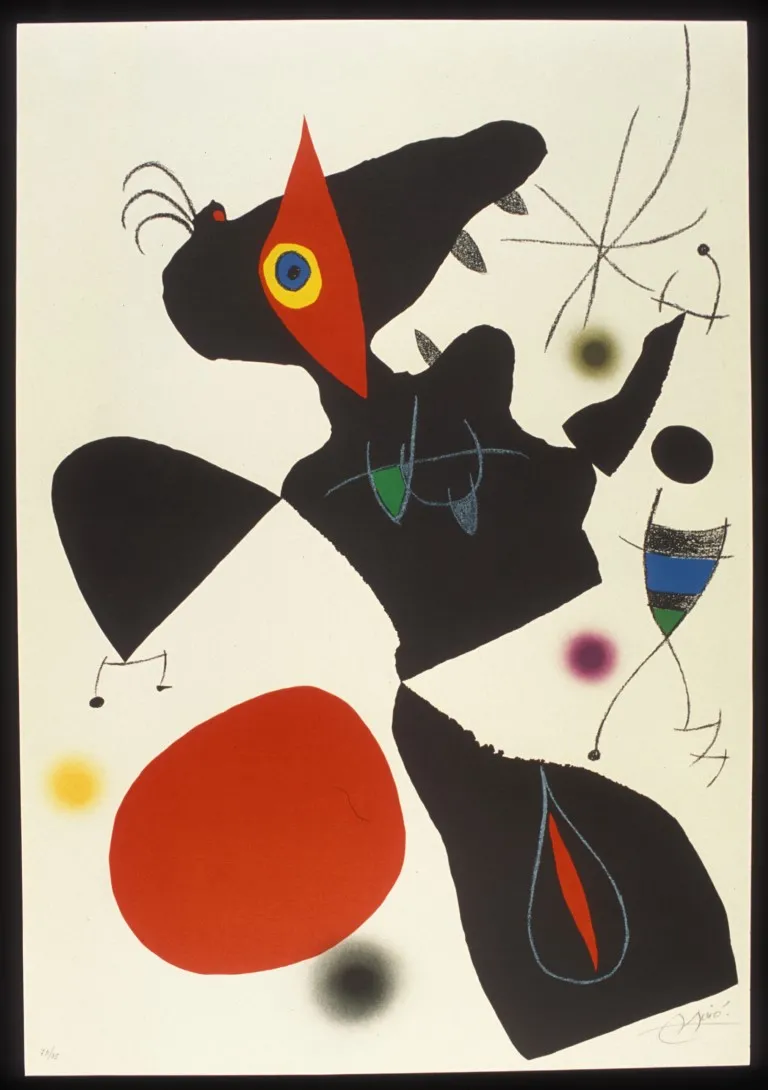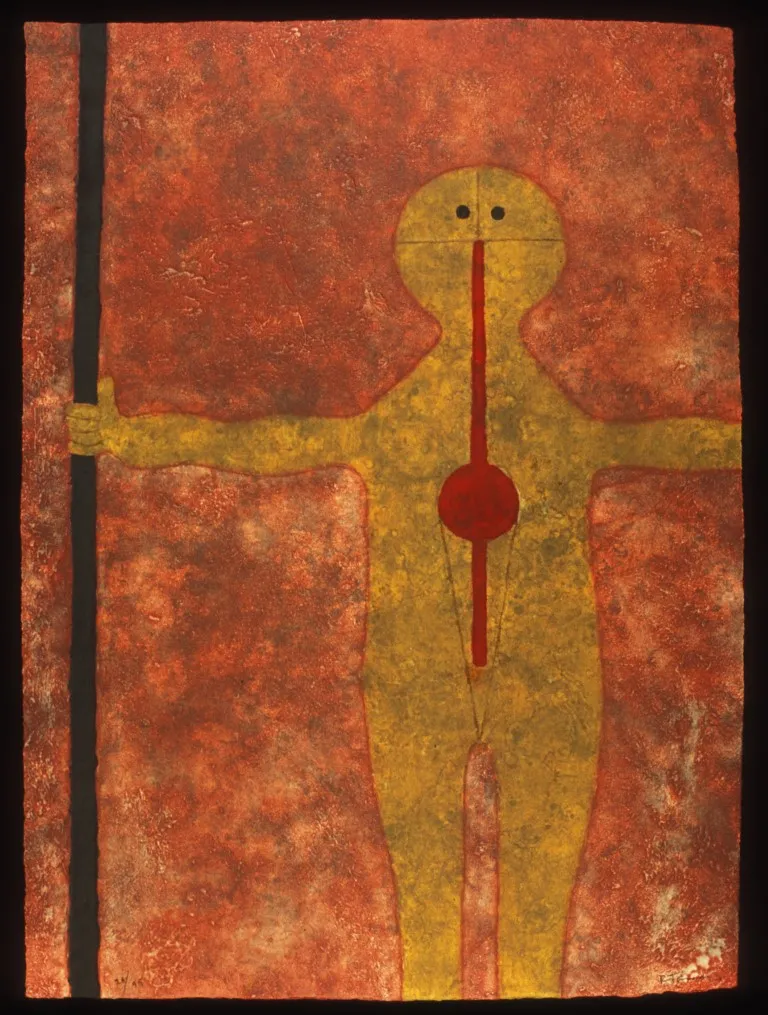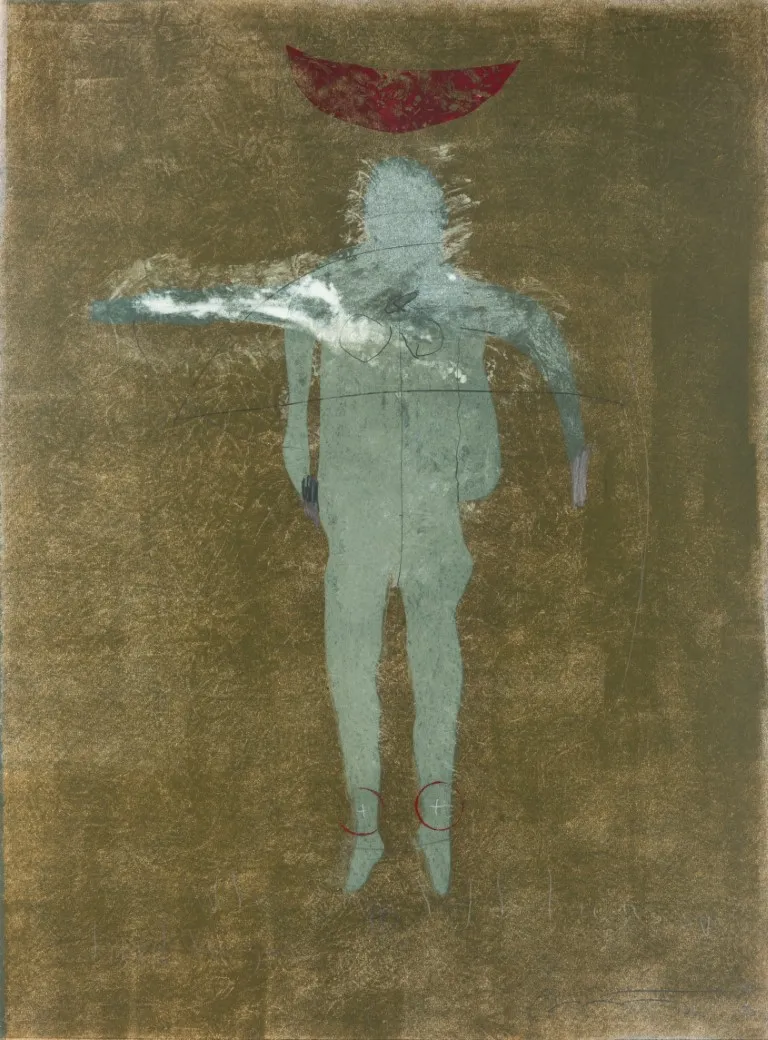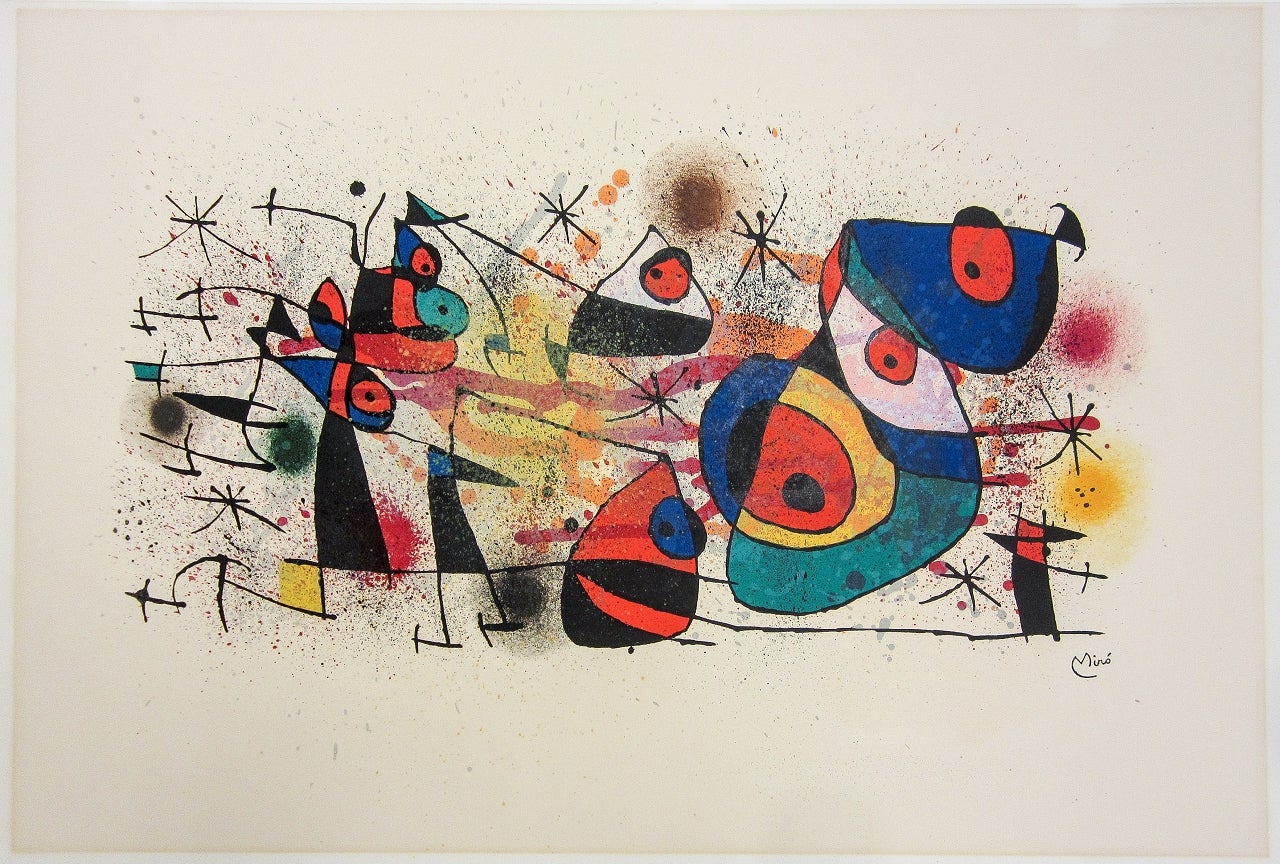Miro, Joan
Spanish, ca. 1973
Ceramics & Sculptures (Eras Rouge)
Ink on paper
27-3/4 x 18-3/4 inches
Gift of Dr. Roger and Karen Michaelsen
Eclectic Abstraction: From Matta and Miró to Rick Bartow presents artworks from the JSMA’s collection. It features non-representational artworks as well as figurative work that diverges from naturalism, reflecting not only a tension between forms, but an artistic freedom and independence from style, subject matter, and context. The exhibition offers an intergenerational and transnational perspective, and more than seventy percent of the works have never been exhibited before at the museum. Many of the selected artists lived through turbulent times and experienced World War I, World War II, civil war, wars with foreign countries, and dictatorships, including Joan Miró, Rufino Tamayo, Roberto Matta, Betty Feves, George Johanson, and Rick Bartow. Other artists in the exhibition, such as Ka’ila Farrell-Smith and Emma Kohlmann, have similarly witnessed drastic changes in the global world order.
Oscillating between art and politics, figuration and abstraction, artists in the exhibition subtly champion freedom amidst social turmoil.
As Joan Miró declared, “After the Nazi invasion of France and [Francisco] Franco’s victory [in the Spanish Civil War], I was sure they wouldn’t let me go on painting, that I would only be able to go to the beach and draw in the sand or draw figures with the smoke from my cigarette…I gave the paintings very poetic titles because that was the line I had chosen to take and because the only thing left for me in the world then was poetry.”
Denouncing wars, authoritarianism, repression, and social injustice, these artists embraced distinct activist roles both within and outside their fields. As they confronted hopelessness, fear, and anxiety, they joined and supported resistance through artistic means, public speeches, and writings. Their work demonstrates a commitment to free expression and artistic experimentation in the face of uncertainty and repression, whether through whimsical and joyous bodily displays, or in more frightening representations of fragmented bodies that invite reflection on their times, and ours today.
The exhibition is curated by Dr. Adriana Miramontes Olivas, Curator of Academic Programs and Latin American and Caribbean Art
